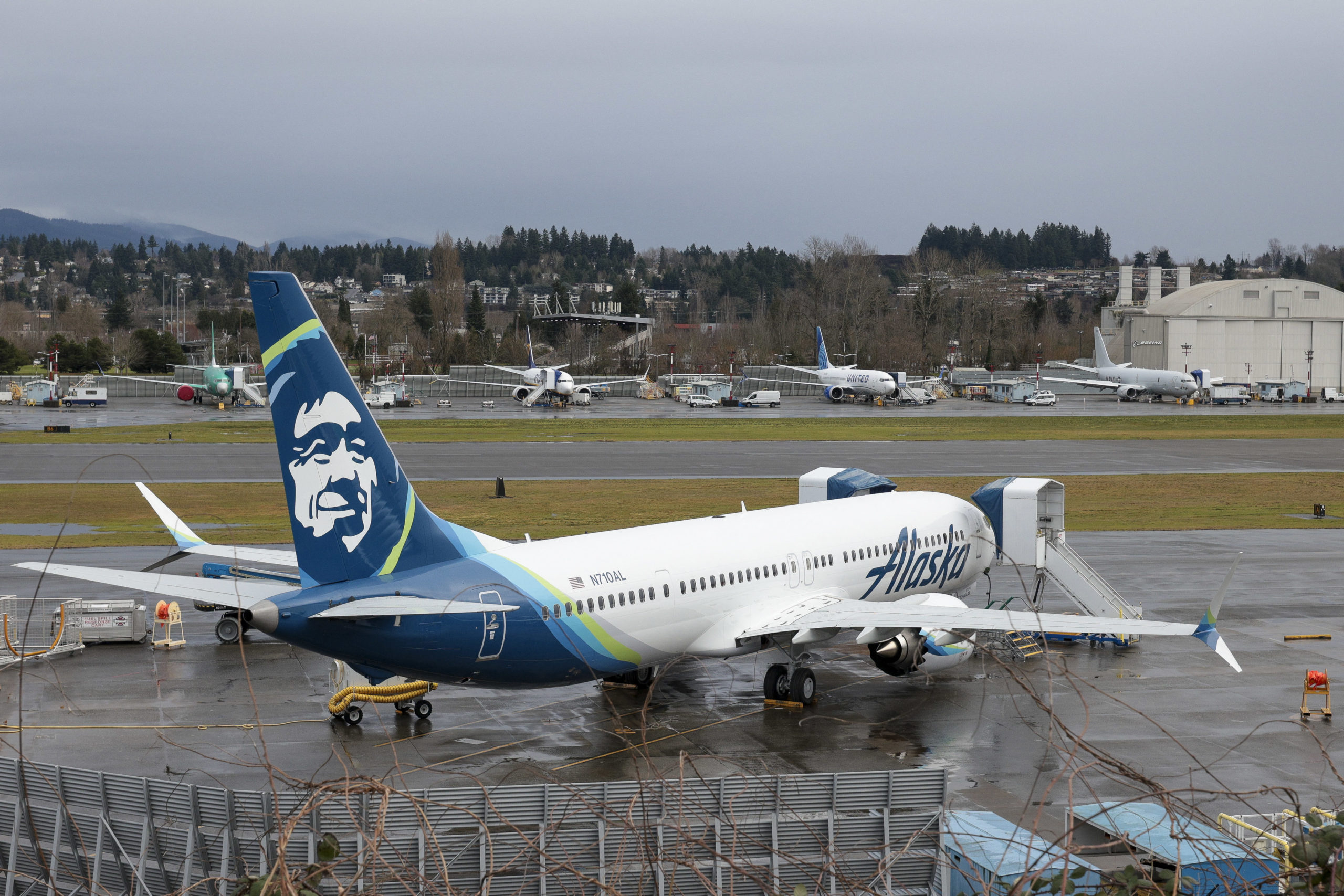Three passengers aboard the Alaska Airlines flight which suffered a door plug ejection Jan. 4 shortly after taking off are suing the company and plane manufacturer Boeing for $1 billion for “systemic risks,” according to a press release.
Passengers on Alaskan Airlines flight 1282 were en route to Ontario, California, from Portland, Oregon when a door plug ejected on the Boeing 737 MAX 9 aircraft shortly after takeoff, creating a gap in the fuselage. Following the incident, an investigation was launched, and 171 Boeing 737 MAX 9 aircraft were temporarily grounded worldwide. (RELATED: Federal Regulators Find Numerous Issues With Boeing Safety Operations)
Three of the flight’s passengers, Kyle Rinker, Amanda Strickland and Kevin Kwok, would be suing the airline and the plane manufacturer for “punitive damages,” citing the incident as “preventable,” aviation law firm Jonathan W. Johnson, LLC, said in a Feb. 23 press statement. The firm also noted Rinker and Strickland were seated only two rows diagonally behind a 15-year-old whose shirt was reportedly “sucked off” during the incident’s impact.
“Further inspections should have been made before the aircraft was placed in service. It seeks to hold Boeing accountable for its negligence which had caused extreme panic, fear, and post-traumatic stress. This experience jeopardized the lives of the 174 passengers and 6 crew members that were on board,” the firm stated.

A Boeing 737 MAX 9 for Alaska Airlines is pictured along with other 737 aircraft at Renton Municipal Airport adjacent to Boeing’s factory in Renton, Washington. (Photo by JASON REDMOND/AFP via Getty Images)
“For those reasons, the lawsuit seeks substantial punitive damages from Boeing for what was a preventable incident and because the defects in manufacturing impacted numerous other aircraft and threatened the lives of the passengers on all Boeing 737 MAX 9 aircraft, which were all grounded by the FAA following the incident.”
As investigations into the incident progressed, a Feb. 6 preliminary report from the National Transportation Safety Board (NTSB) revealed the 737 aircraft door plug had no bolts installed while it was in Renton, Washington. While the report provided “photo documentation” of their findings, it did not disclose what stage of the manufacturing process the plane was in at that time.
“Photo documentation obtained from Boeing shows evidence of the left-hand MED plug closed with no retention hardware (bolts) in the three visible locations,” the report stated.
Production extending the Boeing MAX fleet has since been halted; however, older aircraft from the company are permitted for use only after a thorough inspection, according to the Federal Aviation Administration (FAA).


